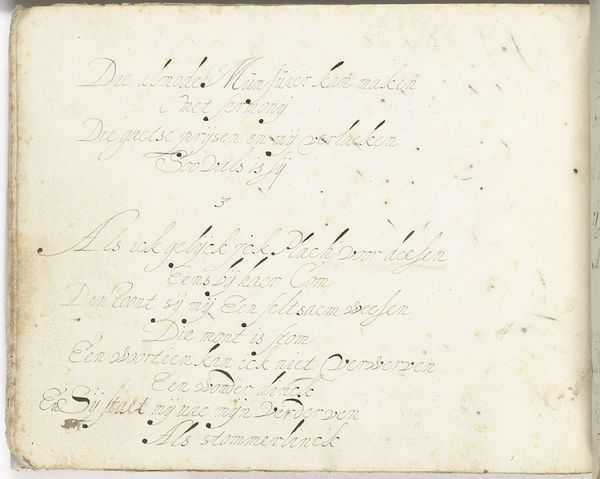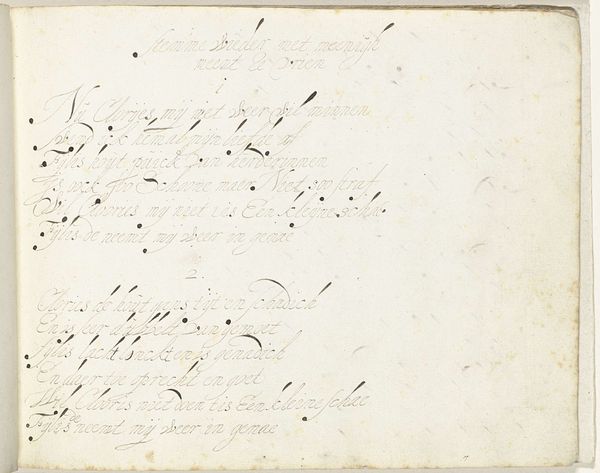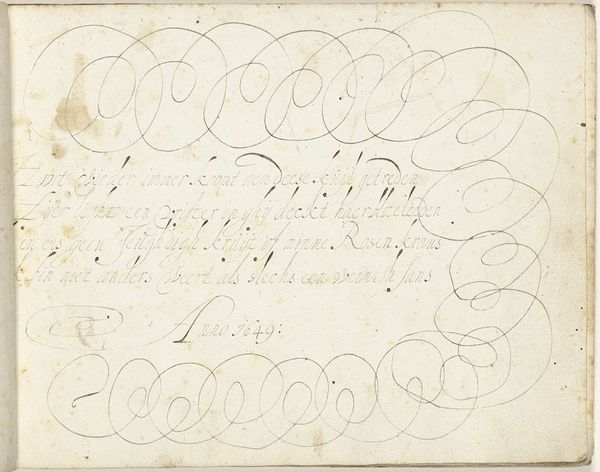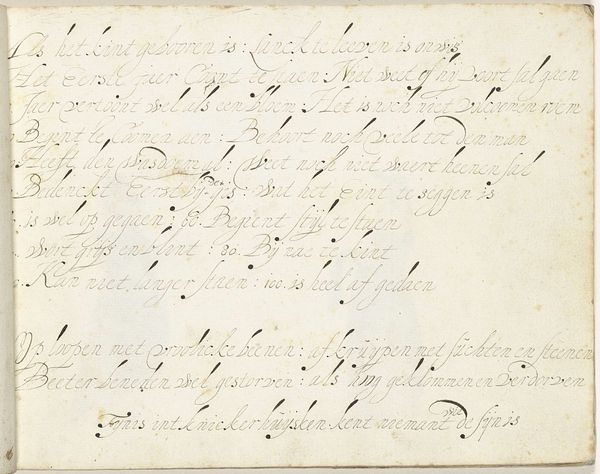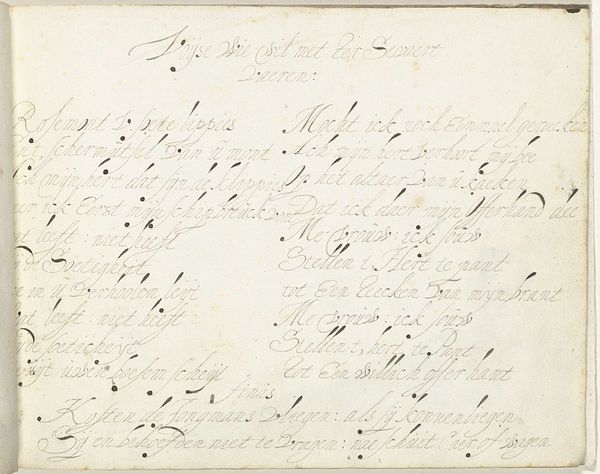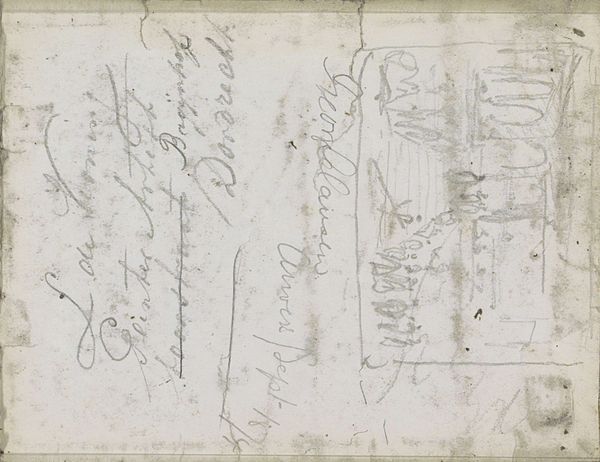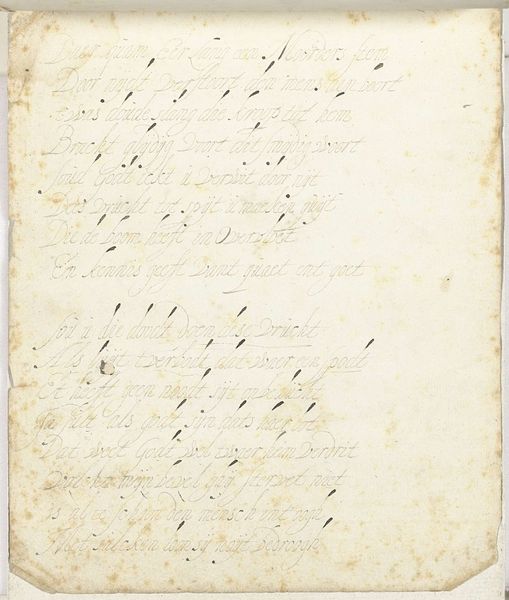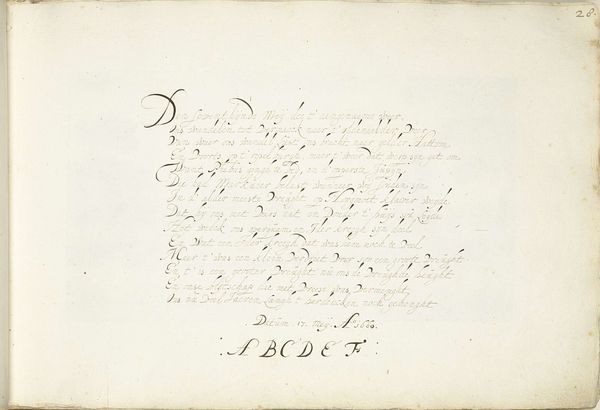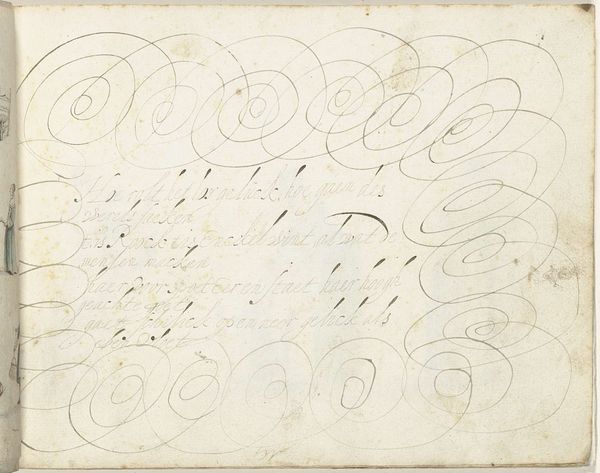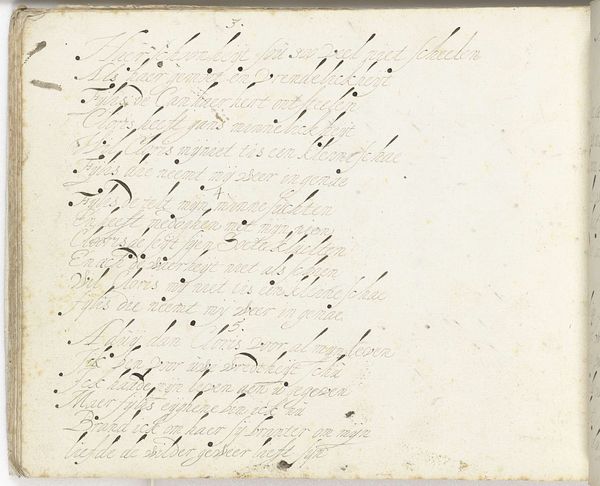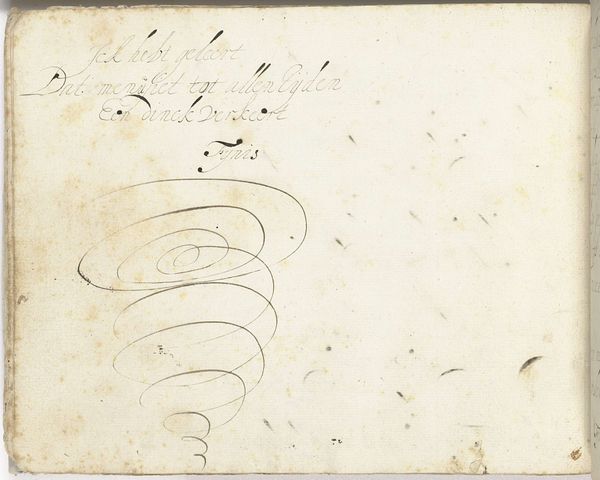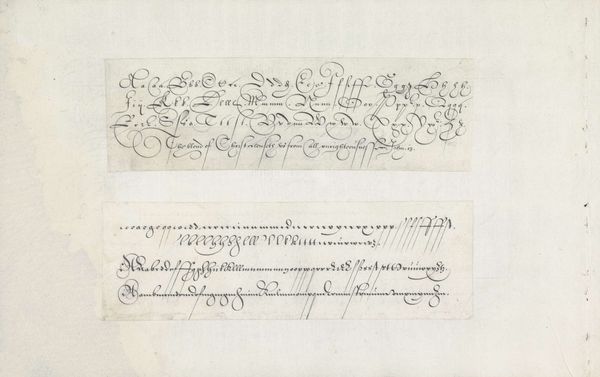
drawing, textile, paper, ink
#
drawing
#
dutch-golden-age
#
textile
#
paper
#
ink
#
watercolor
#
calligraphy
Dimensions: height 155 mm, width 211 mm
Copyright: Rijks Museum: Open Domain
This is a page from a poem, made by Gesina ter Borch in the 17th century, using ink on paper. It’s a very direct example of art-making, as handwriting. The intimacy of the poem is reflected in the immediacy of the materials. Ter Borch’s choice to use paper and ink, readily available, is a contrast to the labour and skill involved in other art forms, like painting or sculpture. The act of writing by hand emphasizes the personal connection between the artist and the work, making the poem a direct expression of emotion and thought. The very texture of the paper, its absorbency, and the flow of the ink across its surface, contribute to the poem’s meaning. It’s worth considering the social context: handwriting was a vital skill, especially for women, and the ability to craft beautiful script could be a sign of accomplishment. But the poem’s real value lies in its emotional weight, and in the connection between the material and the message. It’s a reminder that art doesn't always require fancy materials or complex techniques; sometimes, the simplest means can be the most powerful.
Comments
No comments
Be the first to comment and join the conversation on the ultimate creative platform.
